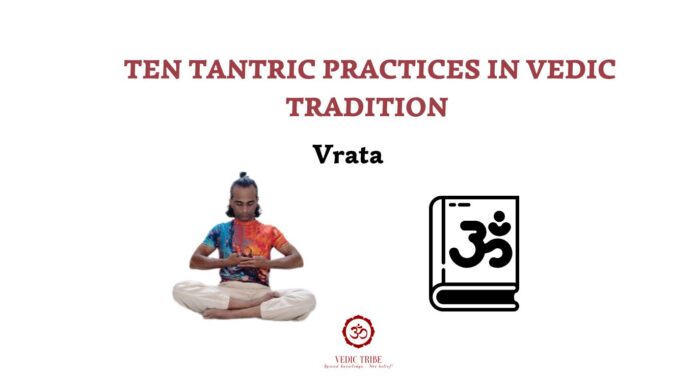Vrata: Taking Control of Yourself
In the previous article, we discussed Puja and in this article we will discuss Vrata.
In Sanskrit, “Vrata” comes from the root “vr,” which means to control or restrain. Simply put, a Vrata is a promise or resolution to follow a specific lifestyle or behavior for a set period. It’s about taking conscious control of your habits and desires.
Examples of Vrata
Ekadashi Vrata: This involves fasting on the eleventh day (generally) of each lunar fortnight (Ekadashi Tithi). It’s a regular commitment repeated twice in a calendar month.
Dadhi Vrata: This involves abstaining from consuming curd for a whole month, starting in the middle of the Shravana Masa. For instance, in 2025, Shravana Masa is from July 11 to August 9.
Dwidala vrata: This involves abstaining from consuming legumes for a whole month, starting in the middle of Ashwina Masa. For instance, in 2025, Ashwina Masa is from September 8 to October 7.
Vrata: A Tool for Self-Discipline
Regulation: From a tantric perspective, Vrata is a method of self-regulation. It’s a way to train your mind and body to follow a chosen path.
Alignment with nature: Most of the Vrata are designed to match with the climatic changes occurring in certain regions. Specification of diet during such climatic changes helps us align with natural way of things.
Ritual stance: Vrata is a powerful way for incorporating austerity into daily life. By adopting a ritualistic approach to our daily activities, we can transform self-regulation into spiritual practices. For example, these actions can be done first – deliberately and mechanically. Once they become habitual, a deeper understanding of the action and their results can be observed.
Sandhyavandana: Even the daily ritual of Sandhyavandana can be considered a lifelong Vrata. It requires discipline and consistency, and Prayaschitta (penance) is prescribed for any lapses.
Srividya Upasana: In this tradition, practitioners receive “deeksha” (initiation) from a Guru and rigorously follow “Yama Niyama” (moral codes). These are strict guidelines for ethical and moral living.
Buddhism: Similarly, Buddhism emphasizes the “Panchasheela” (five precepts), which are resolutions for ethical conduct. These precepts are essential to Buddhist practice.
To do:
Developing Self-Regulation: Vrata helps you learn to control your impulses and develop willpower. Hence, start with the King of all Vrata – Ekadashi Vrata.
Yama and Niyama: If you’re new to spiritual practice, you can start by resolving to observe the Yama and Niyama of Patanjali’s Yoga Sutras:
– Ahimsa (Non-violence) encompasses non-violence in thought, word, and deed towards all living beings.
– Satya (Truthfulness) i.e., being truthful in one’s words and actions.
– Asteya (Non-stealing) i.e., refraining from taking anything that is not freely given.
– Brahmacharya (Continence/Moderation) is often interpreted as celibacy, but more broadly it means the “right use of energy,” including moderation in all things.
– Aparigraha (Non-possessiveness) i.e., freedom from greed and hoarding, letting go of unnecessary possessions.
– Saucha (Purity) i.e., cleanliness of both the body and mind.
– Santosha (Contentment) i.e., finding joy and satisfaction in what one has.
– Tapas (Self-discipline/Austerity) i.e, cultivating discipline, endurance, and perseverance.
– Svadhyaya (Self-study) i.e., introspection, self-inquiry, and the study of sacred texts.
– Ishvara Pranidhana (Surrender to a higher power) i.e,, devotion and surrender to the divine or a higher consciousness.
For advance spiritual practice: Consult Vedic scholars and resolve to observe specific Vrata prescribed in your tradition.
In Simple Terms:
Vrata is like making a promise to yourself to follow a certain rule or practice. It’s a way to train your mind and body to be more disciplined and controlled. It is a tool for self improvement through self control.
In the next article, we will discuss “Yantra”
Madhwesh K
Vedic Tribe

